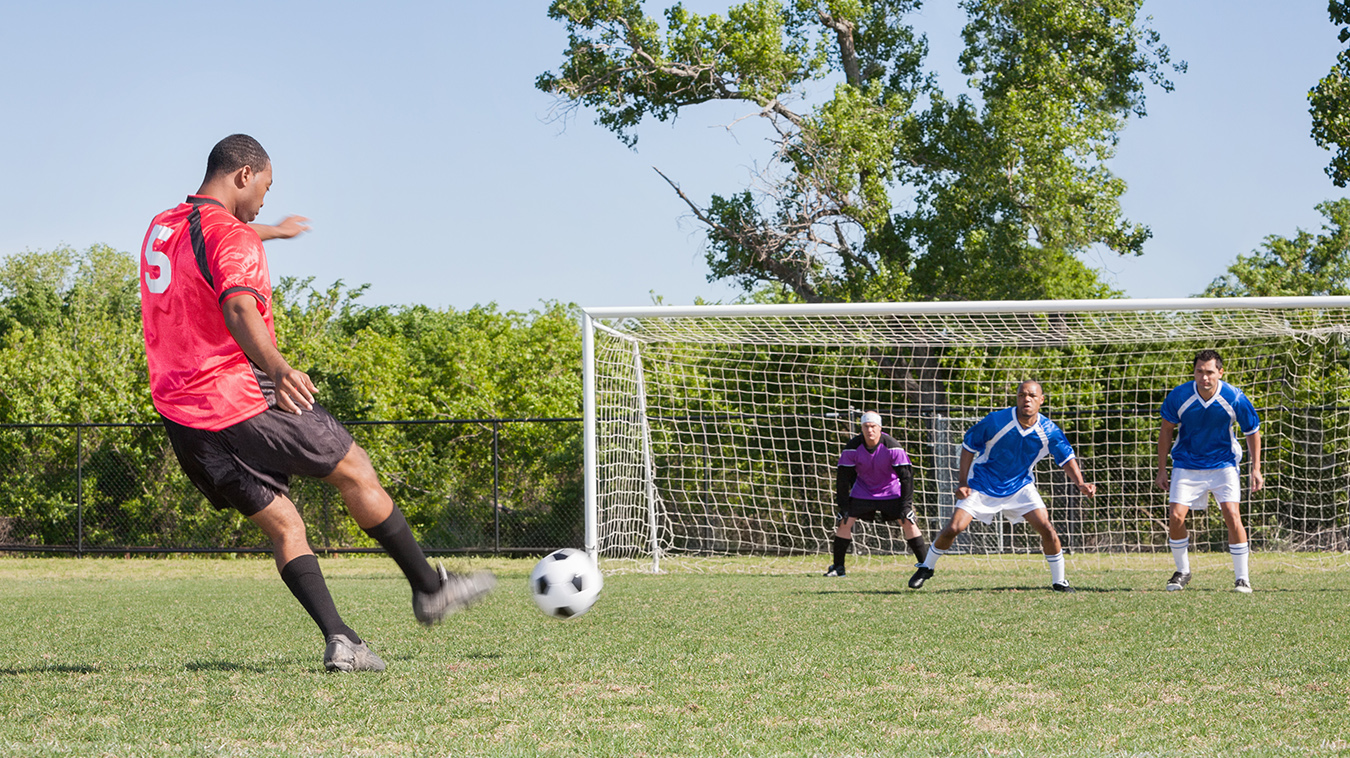
Home REPETITIVE STRAIN SPORT INJURIES TO WATCH FOR
What are repetitive strain injuries? Repetitive strain injuries can occur from repeated movements that stress a particular muscle or tendon. These types of injuries can occur in many parts of the body and symptoms can include inflammation, pain, numbness, or a restricted range of movement around the affected area.
Symptoms can often persist for longer than other sudden injuries, especially if they are not treated. Below we review some common repetitive strain injuries associated with soccer, tennis, and golf, and tips for preventing them.
While heat illness from hot summer practices and concussions from player-on-player contact remain the most common soccer injuries to watch for, repetitive strain injuries are also a concern.
To prevent injury, it’s important to always warm up, stretch, and cool down, as well as train for the specific physical demands of tennis – although you should avoid over-repetition of any one type of shot. Some injuries to watch for include:
Golf is another favourite activity than can cause repetitive strain injuries, such as:
The most important preventive measure is a thorough warm up prior to, and a cool down after, physical activity; this allows the muscles time to adjust. Regular exercise will keep the muscles working effectively and the joints loose, and will reduce the chance of a repetitive strain injury.
If you do experience pain as a result of your favourite activity, treatment can take many forms. Sometimes simply stopping the activity, elevating the injured area, and icing it are enough, while other injuries may respond to dedicated physiotherapy or possibly pain management procedures. If your symptoms do not resolve, however, it’s important to speak to your health care practitioner about your symptoms. Diagnostic imaging, which could include X-ray, ultrasound, or MRI exams, may be ordered to help diagnose an issue.
REFERENCES
Agel, J., et al. (2007) “Descriptive Epidemiology of Collegiate Men’s Soccer Injuries: National Collegiate Athletic Association Injury Surveillance System, 1988–1989 Through 2002–2003.” Journal of Athletic Training. 2007 Apr-Jun; 42(2): 270–277.
Central Orthopedic Group (2018) “5 Common Tennis Injuries & How to Treat Them.” www.centralorthopedicgroup.com. Accessed July 16, 2021.
Newman, T. (2018) “Repetitive strain injury (RSI) explained.” www.medicalnewstoday.com. Accessed July 16, 2021.
Palacois-Jansen, K. (2009) “10 common golf injuries.” www.golfchannel.com. Accessed July 16, 2021.
American Society for Surgery of the Hand (2021) “Golf Injuries to the Hand, Wrist or Elbow.” www.assh.org. Accessed July 16, 2021.
We foster a supportive and collaborative culture designed to encourage positive patient experiences and build strong working relationships across the organization:
Our core values shape the way we work with patients, partners, and fellow employees. And, more than anything else, they’re what set Mayfair apart. In everything we do, this is what we strive for:
EXCELLENCE
We share a commitment to high quality and excellence in all that we do. This commitment calls on all of us to achieve the very best of our capabilities and exceed our own expectations.
CURIOSITY
We innovate in everything, from services to processes. We believe meaningful change and effective problem solving come only by looking at challenges and opportunities from new angles and by exercising our creativity and curiosity.
PASSION
We show pride, enthusiasm, and dedication in everything that we do. We are committed to producing and delivering high-quality results and services. We are passionate about our industry and about our company, services, partners, and patients.
COLLABORATION
Our team is supportive of each other’s efforts; we are loyal to one another; and we care for one another both personally and professionally. We promote and support a diverse, yet unified, team. We work together to meet our common goals across Mayfair clinics, locations, and geographies. Only through collaboration on ideas, technologies, and talents can we achieve our mission and vision.
SERVICE
We take pride in delivering exceptional service every day. We listen to every request with an open mind, always looking for opportunities to go above and beyond to create memorable, personalized experiences. We take responsibility to answer our referrers’ and patients’ requests and respect their time by always responding with a sense of urgency.
Start a career with Mayfair Diagnostics — one of Western Canada’s leading medical imaging teams.
Headquartered in Calgary, Alberta, we’ve been helping people f ind clarity for their health for over 100 years. At our clinics in Calgary and area, Regina, and Saskatoon, our team of radiologists, technologists, and support staff work in a truly integrated way to provide exceptional experiences for our patients. Joining our team is more than a job. It’s an investment in your future — a plan for success.
OUR PEOPLE
Our people share our quest to make a difference in our patient’s lives. We’re a team of professionals, disciplined in our skills and compassionate with our patients, providing the care and attention they need. At our core, we are a trusted partner in our patients’ health care journey. Our patients, physicians, and other health care providers rely on us for quality imaging to help manage their patient’s health care decisions with certainty. But our business is about more than just imaging. It’s about building lasting relationships and making a meaningful difference in the lives of those we meet.
OUR VISION
A world in which every person has clarity about their health. We push the boundaries of what is possible and embrace change as an opportunity. We strive to be thought leaders and encourage creativity by providing a safe place for calculated risk taking. We learn from our mistakes. We share best practices across our operations and are recognized by our peers for our work. We engage the best to help propel us forward in achieving our goals.